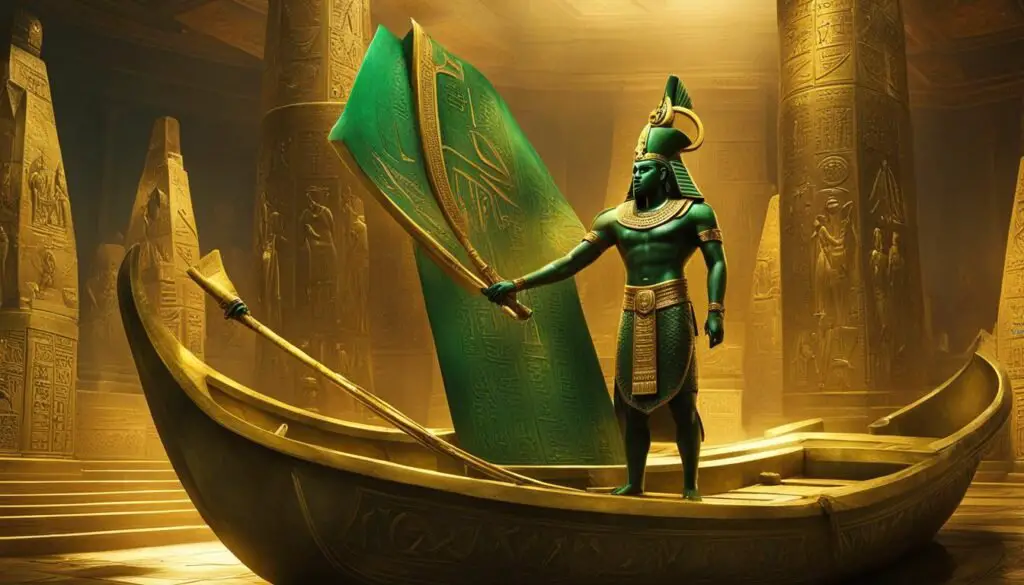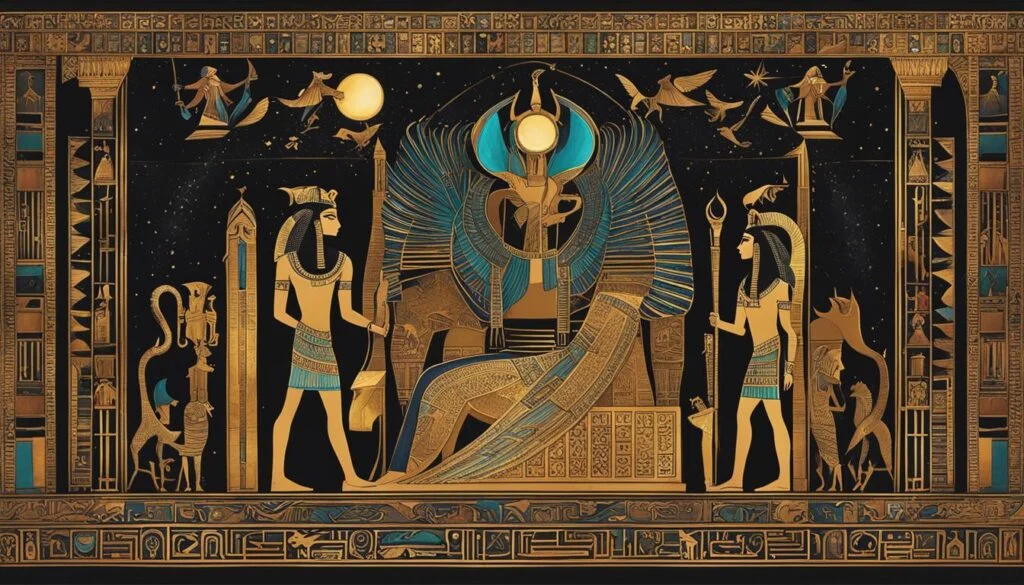A Spanish-Italian archaeological team has recently made an astonishing discovery in the necropolis of Sheikh Abd el-Qurna, Egypt.
They have unveiled a reproduction of the mythological Tomb of Osiris, a significant figure in ancient Egyptian mythology and religion.
This incredible find dates back to the 25th or 26th dynasty and closely resembles the descriptions of Osiris’ tomb found in ancient Egyptian legends.
The tomb complex is adorned with fascinating details, including a carving of Osiris himself and a room featuring a wall relief of a demon holding knives.
Osiris was the god of the underworld and the afterlife in ancient Egyptian religion. He was also the god of the resurrection, vegetation, and fertility. Osiris was a central figure in Egyptian mythology, and his story is one of the most well-known in the world.
Key Takeaways:
- Osiris, a prominent figure in Egyptian mythology, has been brought to life through the discovery of a reproduction of his tomb.
- The tomb complex closely resembles the descriptions of Osiris’ tomb in ancient Egyptian legends.
- A Spanish-Italian archaeological team unearthed the tomb in Egypt’s necropolis of Sheikh Abd el-Qurna.
- The tomb is believed to date back to the 25th or 26th dynasty.
- The tomb complex contains intricate carvings, including a depiction of Osiris and a wall relief of a demon holding knives.
The Legend of Osiris
According to Egyptian mythology, Osiris, the god of the underworld, plays a central role in the ancient Egyptian religion.
His story is deeply intertwined with the beliefs and rituals surrounding life and death in the Egyptian culture.
In the mythology, Osiris is said to have been killed by his envious brother, Set. Set cut Osiris’ body into pieces and scattered them in the Nile River.
However, Osiris’ wife, Isis, using her powerful magic, managed to gather all the pieces and reunite them, bringing Osiris back to life.
Once resurrected, Osiris became the ruler of the underworld and the god of the dead.
He represented the cycle of death and rebirth, symbolizing the eternal nature of life and the afterlife in Egyptian belief.
This myth of Osiris and his resurrection holds a significant place in the Egyptian religion.
It conveys the belief in the continuity of life beyond death and the hope for eternal existence in the afterlife.
In the next section, we will explore the symbolism associated with Osiris and how it is reflected in the recently discovered tomb complex.
The Symbolism of Osiris
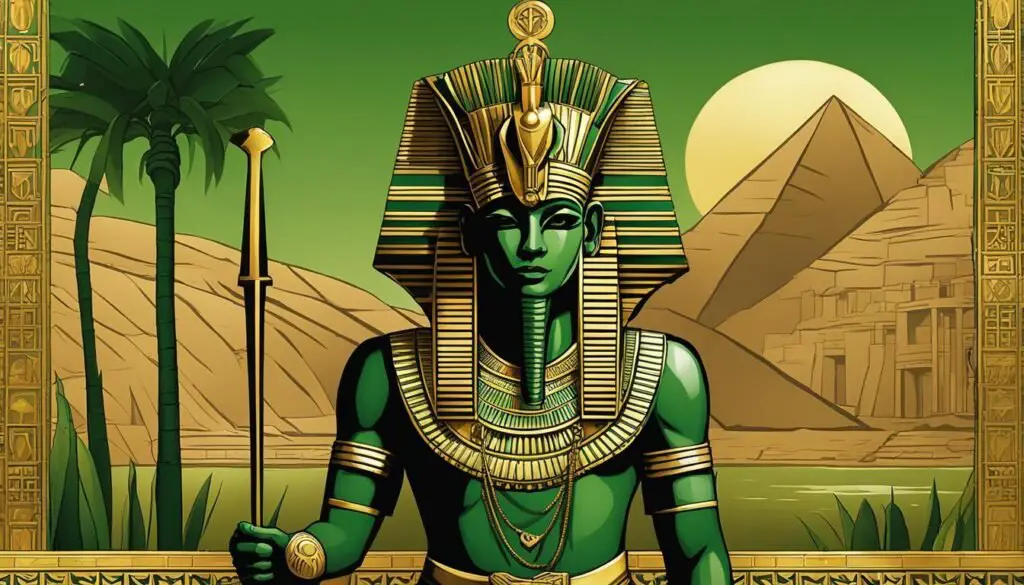
The tomb complex discovered by the archaeological team unveils the profound symbolism associated with Osiris, the god of the underworld in ancient Egyptian mythology.
The intricate design of the tomb reflects key elements of the Osiris story. At the center of the tomb, a staircase leads downward, symbolizing the descent into the underworld, where Osiris reigns as the ruler of the dead.
An iconic statue of Osiris stands on a small “island” within the tomb, representing his prominent role and divine power.
The statue serves as a visual reminder of Osiris’ significance and his role as the god who provides guidance and protection in the afterlife.
The tomb’s design also incorporates an empty corridor, which serves as a symbolic representation of the river that Osiris and the deceased must cross to reach the realm of the dead.
This corridor signifies the journey of the soul in the afterlife, highlighting the mythical connection between Osiris and the deceased.
Key Symbolic Elements Discovery
- A staircase leading to the underworld
- A statue of Osiris on a small “island”
- An empty corridor symbolizing the river crossing
- A burial chamber below the statue, representing the connection between the deceased and Osiris
These symbolic representations within the tomb complex provide valuable insights into the ancient Egyptians’ deep-rooted beliefs and their understanding of the Osiris story.
The careful construction and inclusion of these symbolic elements illustrate the importance of Osiris in their religious and funerary practices.
The image above captures the essence of the Osiris symbol, showcasing the interplay of life and death, and the passage to the afterlife, which were central themes in ancient Egyptian culture.
The Function of the Tomb

The tomb of Osiris played a vital role in facilitating rituals that connected the god of the underworld with the pharaohs.
This sacred space served as a representation of the profound bond between Osiris and the ancient Egyptian rulers, offering them hope for eternal life in the afterlife.
Ancient Egyptians firmly believed that by participating in these rituals and aligning themselves with Osiris, the god of the underworld, the pharaohs could attain everlasting existence beyond death.
The tomb, therefore, held immense significance as it symbolized the gateway to immortality.
The elaborate ceremonies performed within the tomb encompassed sacred rites that aimed to secure the pharaohs’ eternal fate.
It was during these rituals that the divine connection with Osiris was strengthened and the promise of eternal life was reinforced.
Through their association with Osiris, the god of the underworld, the pharaohs sought to ensure their place in the afterlife.
The tomb’s purpose was to substantiate this connection, providing a physical representation of the underlying belief in the attainment of eternal life.
By participating in the rituals held within the tomb, the pharaohs actively engaged with the god of the underworld, solidifying their bond and reinforcing the potential for everlasting existence.
The Discovery of the Tomb
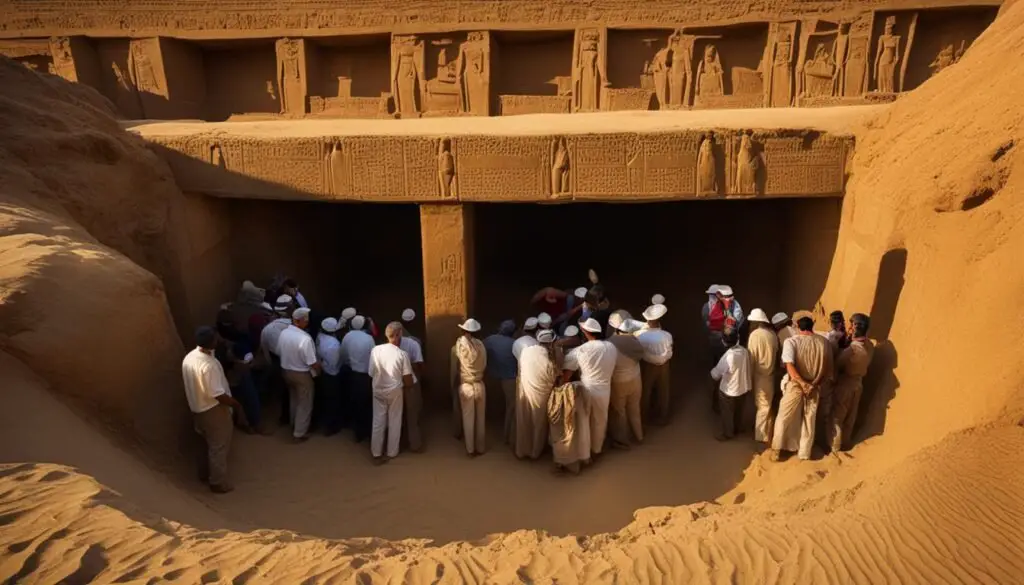
The tomb complex was uncovered by a Spanish-Italian archaeological team in collaboration with the Egyptian Ministry of Antiquities.
This significant discovery sheds new light on the rich history and mythology of ancient Egypt.
The structure of the tomb closely resembles the design of the Osireion in Abydos, Luxor, showcasing the ancient Egyptians’ meticulous attention to detail in tomb construction.
The excavation process revealed multiple shafts and chambers within the tomb complex.
One of the notable findings was a room adorned with reliefs depicting demons holding knives, adding an intriguing element to the tomb’s narrative.
These intricate reliefs provide valuable insights into the religious and symbolic significance associated with Osiris and the afterlife in ancient Egyptian culture.
Believed to date back to the 25th or 26th dynasty, the tomb showcases the masterful craftsmanship and architectural prowess of the time.
Each chamber within the tomb complex offers a glimpse into the rituals and beliefs surrounding the worship of Osiris, the god of the underworld.
As the excavation continues, the archaeological team hopes to uncover further evidence and artifacts that will deepen our understanding of the tomb’s purpose and its role in ancient Egyptian society.
- Egyptian Ministry of Antiquities: This foundational partnership between the archaeological team and the Egyptian Ministry of Antiquities ensures the proper preservation and exploration of this historically significant tomb.
. - Excavation: The ongoing excavation efforts promise to unveil more secrets hidden within the tomb’s chambers, providing a comprehensive understanding of its structure and purpose.
. - Tomb Structure: The closely replicated design of the Osireion in Abydos, Luxor, showcases the ancient Egyptians’ adherence to specific architectural patterns and symbolism associated with the god Osiris.
The Artifacts within the Tomb
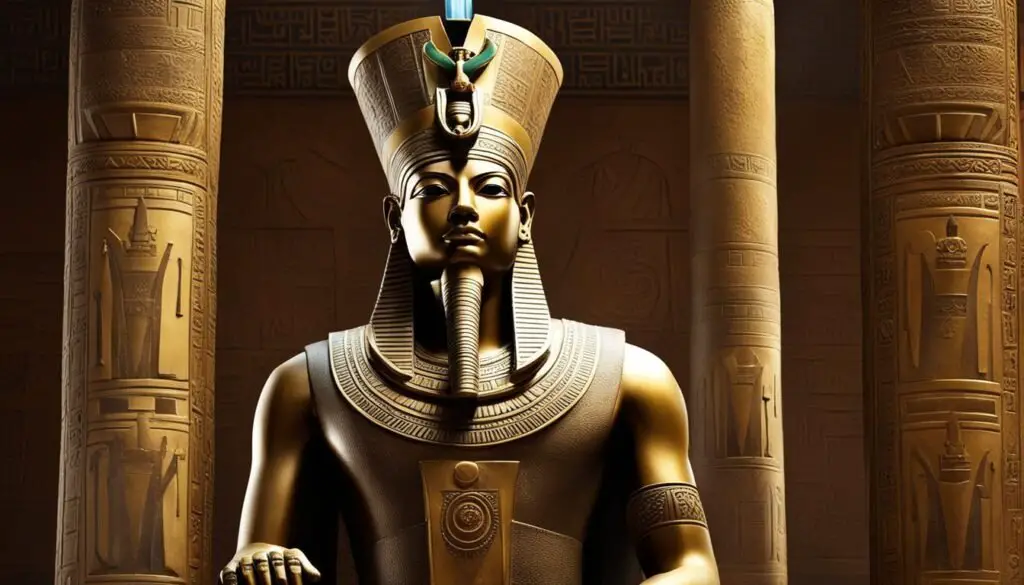
The tomb complex discovered by the Spanish-Italian archaeological team is a treasure trove of ancient Egyptian artifacts, offering a fascinating glimpse into the religious practices and beliefs surrounding Osiris. Among the remarkable finds are:
- Carving of Osiris: A striking representation of the god Osiris, it showcases his regal stature and divine attributes. This exquisite carving provides a tangible link to the myths and legends associated with Osiris.
. - Statues and Figurines of Osiris: Numerous statues and figurines depicting Osiris reveal the reverence in which he was held by the ancient Egyptians. These intricately crafted symbols further emphasize his importance as a central figure in their religious pantheon.
. - Depictions of Demons: The tomb contains reliefs depicting demons, evoking the mythical struggles faced by Osiris during his journey to the afterlife. These haunting portrayals shed light on the ancient Egyptians’ belief in the supernatural realm and the forces that threatened their quest for eternal life.
. - Figurines of Baboons and the Goddess Mut: The presence of baboon figurines signifies the association of Osiris with the god Thoth, often depicted as a baboon-headed deity. Additionally, the inclusion of the goddess Mut, associated with motherhood and fertility, highlights the connections between Osiris and the cycles of life.
These artifacts collectively contribute to our understanding of Osiris and the role he played in ancient Egyptian religion.
They offer a tangible link to the beliefs, rituals, and spiritual practices that were an integral part of the civilization that revered Osiris.
Importance and Significance of the Tomb

The burial chambers within this remarkable tomb hold great importance as they contain the remains of individuals who were intimately associated with Osiris in death.
These individuals firmly believed that by being laid to rest in proximity to Osiris, they would join the god of the dead in the afterlife and attain eternal life.
This sacred burial site serves as a tangible link between the deceased and Osiris, reinforcing its significance as a place of religious devotion and a physical connection to the realm of the underworld.
The presence of Osiris-related elements, such as the carving of Osiris and the symbolic representations throughout the tomb, further emphasizes the profound role it played in the worship and veneration of the god of the dead.
In the ancient Egyptian culture, the act of burying the deceased in such proximity to Osiris was a profound spiritual gesture, ensuring that the departed would be guided and protected by the divine presence of the god himself.
The tomb stands as a testament to the reverence and deep-rooted beliefs surrounding Osiris in the ancient Egyptian society, shedding light on their intricate understanding of life, death, and the quest for eternal salvation.
The Ongoing Exploration of the Tomb
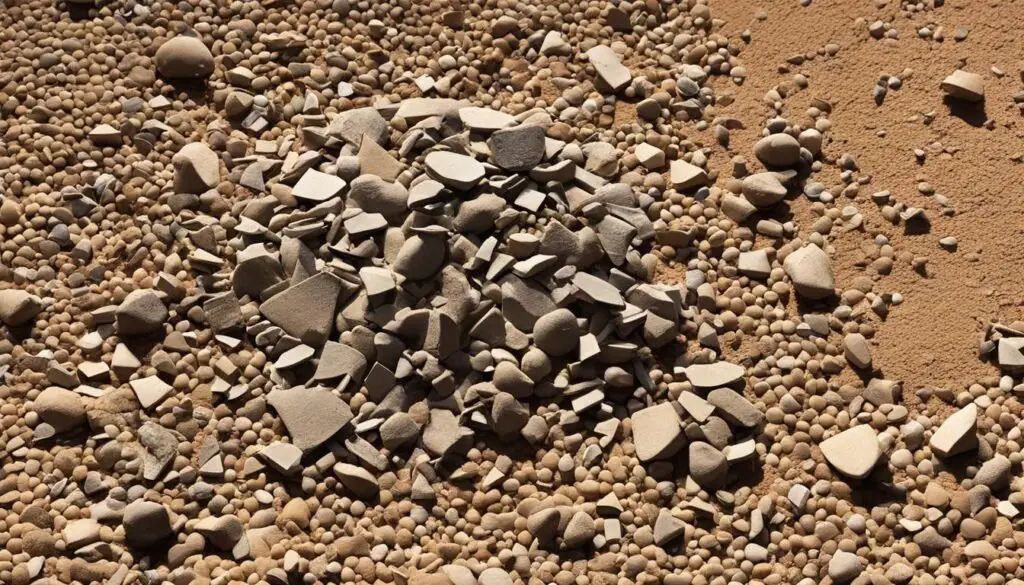
The fascinating tomb complex dedicated to Osiris is still undergoing exploration and excavation by a dedicated team of archaeologists.
With each passing day, new discoveries are being made that shed light on the significance and purpose of this remarkable historical site.
The chambers within the tomb, including the rooms filled with debris accumulated over centuries, are being meticulously cleared and studied.
Through this painstaking process, archaeologists hope to uncover hidden treasures and gain deeper insights into the ancient Egyptian beliefs and practices surrounding Osiris.
Excavation is a vital aspect of this ongoing exploration. By carefully removing layers of debris, archaeologists can reveal artifacts and structures that have long remained hidden beneath the surface.
Every excavation brings the possibility of uncovering valuable clues that illuminate the religious significance and cultural practices associated with Osiris and his worshipers.
The ongoing research and examination of the tomb complex will allow experts to piece together an even clearer picture of this ancient civilization’s beliefs and rituals.
Every artifact found, every inscription deciphered serves as a stepping stone towards a deeper understanding of Egyptian archaeology and the mythology surrounding Osiris.
Insights from Ongoing Excavations
- As debris is carefully cleared, archaeologists have discovered a variety of artefacts, ranging from intricate statues of Osiris to delicate figurines representing various gods and goddesses of ancient Egypt.
. - The study of these artifacts offers invaluable insights into the religious practices and beliefs of the ancient Egyptians, shedding light on their deep reverence for Osiris and the significance of his role as the god of the underworld.
. - Deeper excavations may reveal additional chambers and burial sites, providing further evidence of the reverence and devotion dedicated to Osiris by the ancient Egyptians.
This ongoing archaeological exploration holds the promise of uncovering even more secrets and stories from the ancient past, expanding our understanding of Osiris, Egyptian mythology, and the rich tapestry of ancient Egyptian culture.
Excavation and meticulous study continue to be the cornerstone of archaeological research, allowing us to piece together fragments of history and gain insights into the lives of ancient civilizations.
The ongoing exploration of the Osiris tomb complex exemplifies the significance of archaeology in unraveling the mysteries of the past.
Conclusion
The recent discovery of the tomb complex dedicated to Osiris has offered new insights into the significance of this ancient Egyptian deity in mythology and religion.
The meticulously designed tomb structure, along with the artifacts found within, highlight the deep connection between Osiris and the worshipers of ancient Egypt.
This remarkable find adds to our understanding of the complex beliefs and rituals practiced by this ancient civilization.
Egyptian mythology revolves around numerous gods and goddesses, each playing a unique role in the ancient Egyptian pantheon. Osiris, as the god of the underworld and ruler of the afterlife, held immense importance in their belief system.
The discovery of this tomb complex reaffirms the central role of Osiris in Egyptian mythology and the reverence accorded to ancient Egyptian gods.
Explorations within the tomb complex have uncovered a wealth of artifacts related to Osiris and the religious practices of that time.
From statues and figurines depicting Osiris, baboons, and the goddess Mut, to intricate reliefs showcasing demons and deities, these artifacts provide valuable insights into the artistic and devotional expressions of ancient Egypt.
The Osiris discovery not only enhances our understanding of Egyptian mythology, but it also highlights the ongoing efforts of archaeologists to uncover the mysteries of this ancient civilization.
As further excavations continue, more debris-filled rooms and hidden chambers may be revealed, shedding further light on the beliefs and rituals surrounding Osiris and other ancient Egyptian gods.
Frequently Asked Questions
Q: What does Osiris represent in Egyptian mythology?
A: In Egyptian mythology, Osiris is the god of the afterlife, resurrection, and fertility. He symbolizes the cycle of life, death, and rebirth, and is often associated with the annual flooding of the Nile and the resulting growth of crops.
Q: Is Osiris good or bad?
A: Osiris is generally considered a benevolent and virtuous god in Egyptian mythology. He is a symbol of rebirth and justice, and is revered as a wise and fair judge of the dead in the afterlife.
Q: What is the myth of Osiris about?
A: The myth of Osiris revolves around his betrayal and murder by his brother Seth, his resurrection by his wife Isis, and his subsequent reign over the afterlife. This myth represents the themes of life, death, betrayal, love, and redemption.
Q: Who killed Osiris in Egyptian mythology?
A: In Egyptian mythology, Osiris was killed by his brother Seth. Seth tricked Osiris into lying in a coffin, sealed it shut, and threw it into the Nile, symbolizing jealousy and the struggle for power.
Q: Is Osiris a god or a Demon?
A: Osiris is a god in Egyptian mythology. He is revered as the god of the afterlife, resurrection, and fertility, and plays a key role in the religious beliefs and practices surrounding death and the afterlife in ancient Egypt.
Q: Who is Osiris in love with?
A: Osiris is in love with his wife, Isis. Isis is a powerful goddess in Egyptian mythology known for her magical skills, love for Osiris, and dedication to resurrecting him after his murder by Seth.
Q: Are Anubis and Osiris the same?
A: No, Anubis and Osiris are not the same. Anubis is the god of mummification and the afterlife, often depicted as overseeing the embalming process and guiding souls to the afterlife. Osiris is the god of resurrection and the ruler of the underworld.
Q: What did Isis do to Osiris?
A: Isis, after finding the body of her murdered husband Osiris, used her magical powers to resurrect him. She reassembled his body, brought him back to life temporarily, and conceived their son, Horus. Isis’s actions symbolize devotion, love, and the power of magic.
Q: Did Osiris marry his sister?
A: Yes, in Egyptian mythology, it is said that Osiris married his sister, Isis. Such unions between deities, who were also siblings, were common in Egyptian mythology and were symbolic of the close relationships among the gods.


